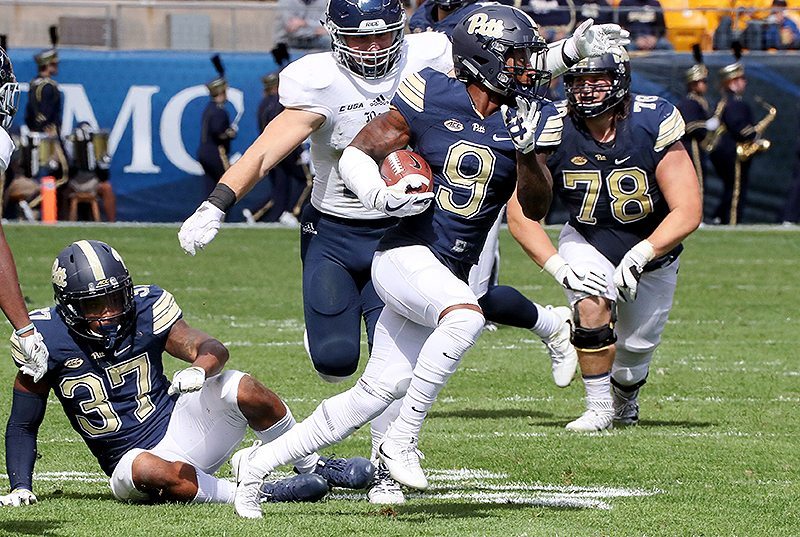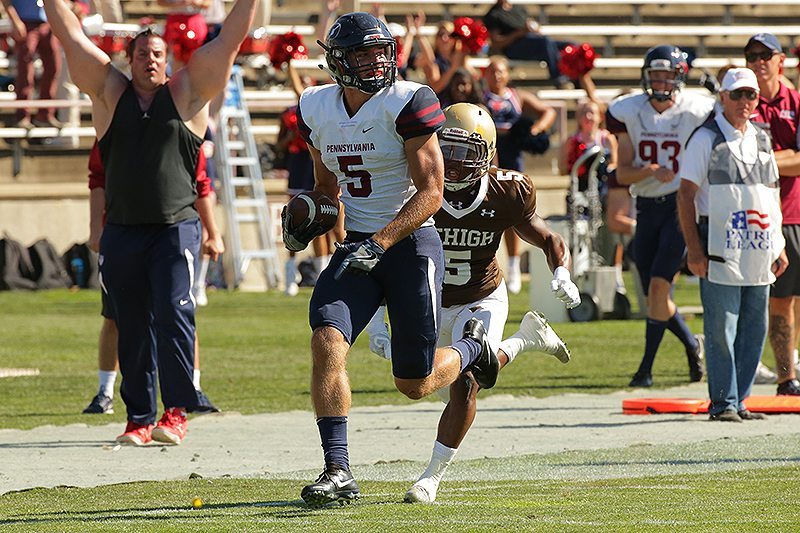Sikkema’s Stat of the Week
Last year, Tampa Bay’s pass defense sucked.
I like writing in my own columns as it allows me to be more direct and right to the point without sugarcoating things.
In 2017, Tampa Bay was dead last in the NFL with 260 passing yards allowed per game. The Bucs were actually in the middle of the pack with just 22 passing touchdowns given up per game, and also right around the league average with 13 interceptions, as a whole. But, their first down conversion percentage was fourth worst in the league and their completion percentage was also fourth worst in the league.
Tampa Bay’s total points allowed was tied for ninth worst, which, if you really look at it, two less touchdowns or a handful less field goals given up on the season would’ve meant the Bucs were right around the league average. And if that happened the Bucs might have had an extra win or two, as well. But, you know what, that didn’t happen.
You know why? Because you can’t play “bend but don’t break” forever. You can’t keep giving up the yards and not expect to give up too many points to be competitive. It’s a coward’s way to play defense, and you know what else? That’s not the way playoff teams play defense. Usually the teams with the more aggressive defenses that have more sacks and force more turnovers are in the playoffs.
Now, I get it. When a team has the worst pass rush unit in the NFL, it’s not logical to ask your secondary unit to play close coverage long enough to get to the quarterback. But, guess what? In 2016, when the team was ninth in the NFL in sacks with 38, it still gave up 250 passing yards per game. That’s only 10 yards per game better from when it was dead last in 2017, so even though their ranking was much better than the previous year, the numerical production wasn’t all that different.
Why? Mike Smith’s philosophy.

Bucs CB Vernon Hargreaves III – Photo courtesy of the Buccaneers
If you’ve followed my work for the better part of the last year you know I haven’t really held back on how Tampa Bay’s defensive coordinator uses his cornerbacks. The Bucs play a lot of off coverage which sometimes involves man-to-man assignments but more often then not is some variation of a vertical zone drop, which could be their quarters (Cover 4) coverage or sometimes Cover 3.
What the Bucs typically do is have their cornerbacks line up four to six yards off the line of scrimmage (by design, although Vernon Hargreaves III chose to be much further than that during his struggles) and rather than be physical with receivers. This allows them to have the space to read and react to the quarterback by keeping everything in front of them. This is very much a “pick your battles” style of secondary coverage that allows for catches to be given up and yards to be yielded, by design, in hopes that a turnover will come eventually either by preparation and recognition before the game or an understanding of tendencies during the game – likely a combination of both.
At times, it can result in a Brent Grimes pick-six like he had against Carolina’s Cam Newton in Week 17 of 2016. But, more often than not, it feels more like Julio Jones’ Week 12 game last year against the Buccaneers where he recorded 253 yards and two touchdowns. Usually if you give good receivers space in the NFL, you’re betting that the clock hits zero before you lose. That’s what you’re doing, if you ask me; you’re game-planning for fortune and banking on luck.
But, you don’t have to take it from me. Read what Matt Harmon of NFL.com had to say about the Bucs’ secondary unit in 2017.
“The Buccaneers’ pass defense has regressed the past three seasons, falling from 16th to 22nd before dropping to dead last in 2018. It’s a unit crying for a wave of new talent. Their top cornerback over the last two seasons was Brent Grimes, who surprisingly played extremely well for them despite washing out in Miami. The Bucs should still stock the cupboard with talented young options. Despite being a first-round selection just two years ago, Vernon Hargreaves has been a massive weak link to this point in his career. He played nine games last year, and quarterbacks registered a 101.2 passer rating when throwing in his direction.”
It hasn’t been getting better for the Buccaneers, but the timing has also been odd. The Bucs’ 2016 draft looks bad; no way around it. We’ve sort of heard that there may have been too many voices involved when it came to the selecting of prospects in 2016, but, at this point, defensive end Noah Spence might be the only one who can salvage that class. The Bucs drafted Hargreaves in the first round that year and his timetable has been fair but frustrating. They selected him due to his ability to fit in to the system they run, but that decision in and of itself was flawed.
I’ll get more into that in a bit, but here’s what Bleacher Report’s NFL1000 project, conducted by Ian Wharton, had to say about the Bucs’ three corners in 2017.
Ryan Smith (Ranked 75th)
“There may not have been a more overwhelmed corner to earn more than 500 snaps than Smith. The 2016 fourth-round pick appeared to be guessing at routes with little consideration for how much help he had. His struggles with staying in position to challenge at the catch point were a major issue, and offenses routinely targeted his side of the field. He was unfit to be the third boundary corner in 2017.”
Vernon Hargreaves (Ranked 61st)
“The Buccaneers gambled on a pair of 5-foot-10, quick, off-ball cornerbacks by acquiring Brent Grimes and Hargreaves in 2016, and they hit on Grimes but missed on Hargreaves. The Florida product sees the game slowly and doesn’t fully trust his athleticism, often giving receivers too much cushion as he’s unable to recover from a technical misstep. Tampa Bay eventually moved him into the slot before he missed the last five games of the season with a hamstring injury, and he looked more at home in that role.”
Brent Grimes (Ranked 30th)
“Brent Grimes, now 34, has maintained a high level of play well past his physical peak. The Tampa Bay Buccaneers have played to his strength, which is off-man and a mix of vertical zone drops, so he can read and react to the ball. He’s still quick to break on underneath routes and athletic enough to challenge jump balls, but his recovery speed is all but gone. He needs help over the top to prevent big plays, and his run defense has always been shaky.”
Finally! The message is being proclaimed from a source other than my two index fingers that I use to type (yes, I only use two fingers to type).
Grimes is a really good cornerback, and honestly, he’s been underrated an underappreciated for most of his career, which has been exceptional, especially for a player his size. But, I don’t know if this is via push-back from Grimes himself or if it’s just a call made by Smith looking at who his best cornerback is, but catering to Grimes’ best style of play is actually crippling the rest of this secondary.

Bucs CB Brent Grimes – Photo by: Cliff Welch/PR
When you play off, vertical zone coverage, what you need the most is wisdom at the cornerback position. You need hours and hours complied into years of watching film and you need game-time trials and successes (plus the given athleticism). That’s the only way you can get the anticipation and awareness to make an impact as a off coverage cornerback. If you don’t have that foundation, you’re just a yielded catch waiting to happen, and in 2016 and 2017, that’s what Hargreaves was and that’s what Ryan Smith was last year.
When Hargreaves was pushed into the slot and in the later half of the season where Mike Smith was just try to do anything he could to cover guys, both Hargreaves and Ryan Smith were given some snaps playing close to the line of scrimmage and both fared better, or at least looked more comfortable. Now, close coverage also means you have to deal with being physical and you also are more susceptible to jump balls. Not that Grimes can’t defend those, but at his size and height it’s obviously more difficult.
This is why such an off coverage defense isn’t played much in the NFL at the playoff level because playoff teams don’t have cornerbacks exclusively that small, in size or in height. In the NFL1000 project, eight of the top 10 cornerbacks on the list were 6-feet tall or higher and most weighed over 200 pounds, too. Why? Because you can become a total package at cornerback when that’s your starting point.
Read an excerpt from that project about one of their top cornerbacks who isn’t over 6-foot, L.A. Chargers defensive back Casey Hayward.
“Hayward doesn’t carry side advantages, and he doesn’t have exceptional straight-line speed, but he has a tremendous understanding of the routes his receivers are running, a terrific backpedal which puts him in the right place at the right time, and a calculated yet aggressive approach to the ball when it’s in his area. You won’t see many 5-foot-10 cornerbacks excelling on the outside; Hayward is the exception because he understands his position so completely.”
You know why we’re so surprised that Hayward is able to do the things he does? Because it’s so difficult to do; you read the analysis, it’s nearly a perfect understanding. Most of the time when you draft a cornerback who isn’t of the appropriate length, you’re already starting behind the eight ball. Before they even take an NFL snap, you’re already hoping that they can beat the percentages and the norms that come against them, instead of stacking the deck in your favor the other way around with bigger corners.
It’s not that the Bucs don’t have big, tall cornerback who allow them the freedom to play close coverage, it’s that they never have. It’s the fact that outside of drafting 6-foot-2 Johnthan Banks (who wasn’t good), this team has barely even tried to switch up its defensive philosophy since the late 2000s when it had 6-foot-1 Aqib Talib.
That is until now.
Click to the next page to read about a player who became a Buccaneer on draft weekend that might change how Tampa Bay uses its cornerbacks – in all the right ways.
Trevor Sikkema is the Tampa Bay Buccaneers beat reporter and NFL Draft analyst for PewterReport.com. Sikkema, an alumnus of the University of Florida, has covered both college and professional football for much of his career. As a native of the Sunshine State, when he's not buried in social media, Sikkema can be found out and active, attempting to be the best athlete he never was. Sikkema can be reached at: [email protected]



